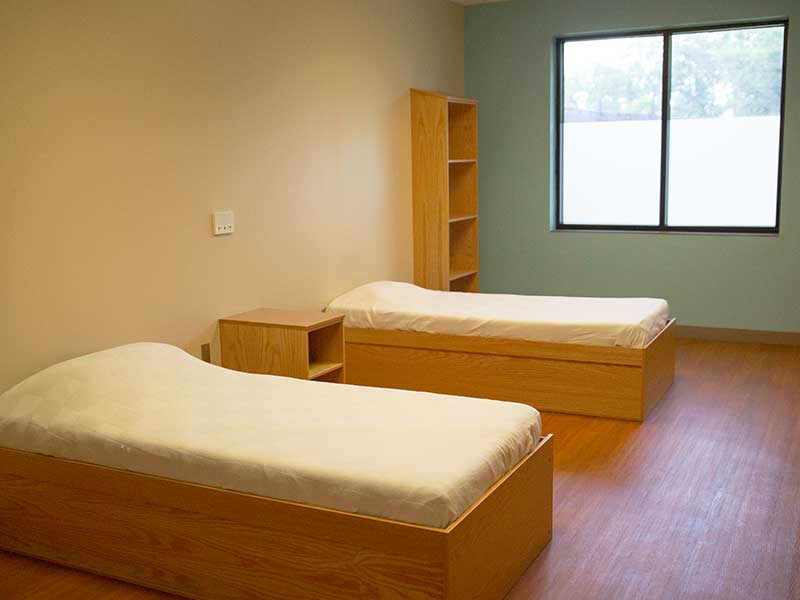Generalized anxiety disorder (also referred to as GAD) is a mental disorder that is characterized by extreme, pervasive, and unrealistic worries about everyday life.
Understanding Anxiety
Learn about anxiety
A small amount of anxiety or stress can be helpful because it may allow an individual to perform better on an important exam or get more tasks done during the day. However, individuals with GAD or another type of anxiety disorder have feelings of worry more often than not, which can cause them to have difficulty with daily life.
Typically, the presence of an individual’s extreme worry cannot be pinpointed; yet, they have persistent feelings of dread and fear. Anxiety disorders can affect thinking and productivity at work, as well as sleep patterns, causing one to sleep too much or not at all. Often, one cannot stop this endless cycle of worry.
The severity of anxiety symptoms will vary, and some people who have generalized anxiety disorder can function socially and remain employed or in school. Others may avoid certain situations that trigger anxiety or face challenges performing the most ordinary daily activities when anxiety levels are high. Generalized anxiety disorder and other types of anxiety disorders can be chronic illnesses that require long-term treatment, which typically includes therapy and medication.
Statistics
Anxiety statistics
Generalized anxiety disorder is a very common issue for many people and is the most common anxiety disorder diagnosed by clinicians. GAD affects about 3.1% of the U.S. population (or 6.8 million adults) each year, with women being twice as likely to be affected as men. While it most often develops in the early 20s, generalized anxiety disorder can impact children as well – over the span of childhood, about 20% of children will be impacted by GAD or panic disorder.
Causes and Risk Factors
Causes and risk factors for anxiety
While there is no single cause for the development of anxiety disorders, there are a number of factors that may interact together to cause the disorder. The most commonly noted causes for anxiety disorders like GAD include the following:
Genetic: People who have a family history of anxiety disorders are at a higher risk for developing the disorder. The risk becomes even higher if the individual has a first-degree relative, such as a parent or sibling, who is suffering from the disorder.
Environmental: Living with constant stress, having a negative childhood upbringing, and experiencing major life changes, such as divorce or relocating, can all play a role in the development of anxiety.
Risk Factors:
- Being a woman
- Existence of chronic health condition
- Childhood trauma(s)
- Substance abuse
Signs and Symptoms
Signs and symptoms of anxiety
The symptoms of an anxiety disorder will vary from one person to the next depending upon personal genetic makeup, temperament, life stresses, and the ability to tolerate unpleasant emotions. Some of the most common symptoms of anxiety disorders can include the following:
Behavioral symptoms:
- Failure to complete activities of daily living
- Frequent absences from work or school
- Avoiding situations that may trigger anxiety
- Inability to complete tasks on time
- Withdrawing from social situations
Physical symptoms:
- Pounding heartbeat
- Excessive sweating
- Frequent urination or diarrhea
- Dizziness
- Stomach cramps
- Choking sensations
- Fatigue
- Muscle tension
- Headaches
- Insomnia
- Nausea
- Hot flashes or chills
Cognitive symptoms:
- Fear of losing control
- Sense of impending doom
- Dissociation
- Depersonalization
- Feelings of restlessness
- Feelings of dread
- Feeling like your mind has gone blank
- Anticipation of the worst
- Difficulty maintaining concentration
Psychosocial symptoms:
- Helplessness
- Worthlessness
- Depression
- Irritability
- Mood swings
- Hopelessness
Effects
Effects of anxiety
The long-term effects of untreated anxiety disorders will vary according to the duration of the illness, severity of symptoms, and available coping strategies. Some of the long-term effects of anxiety disorders may include:
- Inability to hold employment
- Headaches
- Self-harm
- Social isolation
- Strained interpersonal relationships
- Failure in school
- Depression
- Substance use and abuse
- Chronic bowel or digestive conditions
- Insomnia
- Suicidal thoughts and behaviors
Co-Occurring Disorders
Anxiety and co-occurring disorders
Many people who struggle with anxiety disorders also struggle with co-occurring mental illnesses. The most common disorders that occur alongside anxiety disorders can include:
- Depression
- Multiple types of anxiety disorders
- Substance use disorders
- Bipolar disorder












